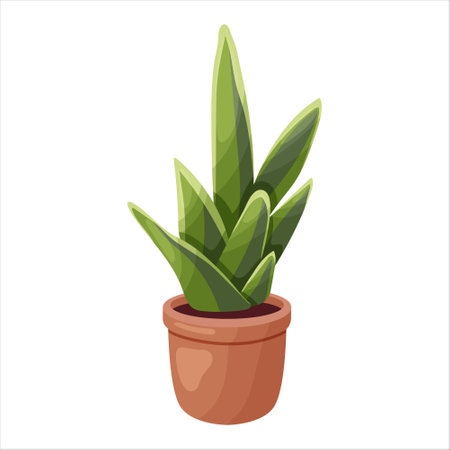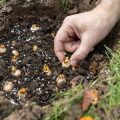1. Understanding Rust Fungi: What Every Gardener Should Know
If you’ve ever strolled through your backyard and noticed strange orange, yellow, or brown spots on your lawn, roses, or veggies, you might be dealing with rust fungi. Rust isn’t just a problem for old tools in the shed—it’s a real challenge for home gardeners all across America.
What Are Rust Fungi?
Rust fungi are plant diseases caused by a group of fungal pathogens. Unlike some garden pests that chew or suck on leaves, rust works quietly, forming powdery pustules on leaves and stems. These spores can easily spread from plant to plant—sometimes carried by the wind, rain, or even on your gardening gloves.
Why Should You Care About Rust?
Many folks think rust is just a cosmetic issue, but it can do real damage if left unchecked. In American gardens, it’s especially tough on lawns (like Kentucky bluegrass or fescue), prized rose bushes, snapdragons, hollyhocks, and even fruit trees. When rust takes hold, it weakens plants by disrupting photosynthesis—the way plants turn sunlight into energy. Over time, this means less lush growth and fewer blooms or fruits.
Common Signs of Rust in Your Garden
| Plant Type | Rust Symptoms |
|---|---|
| Lawn Grass | Orange/yellow dust on blades, thinning patches |
| Roses | Powdery orange or black spots under leaves |
| Vegetables (Beans, Asparagus) | Tiny reddish-brown pustules; wilting leaves |
| Fruit Trees (Apple, Pear) | Bumpy orange spots on leaves; early leaf drop |
How Rust Spreads in American Yards
Our varied climate—from humid Southern summers to cool Pacific Northwest springs—creates perfect conditions for rust fungi to thrive. Wet foliage and poor air flow are like an open invitation for these spores. Rust fungi overwinter on plant debris and start their mischief as soon as temperatures warm up.
The Real Impact: More Than Just Looks
While those rusty spots might look minor at first, they can stress your plants over time. Lawns may become patchy and thin. Roses might lose their leaves before summer’s end. Veggies won’t yield as much at harvest time. For many gardeners here in the States, keeping rust at bay means more than having pretty plants—it’s about growing healthy food for our families and enjoying vibrant backyards all season long.
2. Spotting the Signs: Identifying Rust on Lawns and Roses
If you love spending time in your yard or tending to your family’s garden, rust fungi can be a sneaky problem. The earlier you spot rust, the easier it is to control. Here are some practical tips for recognizing early symptoms of rust on your favorite garden plants—especially lawns and roses.
What Does Rust Look Like?
Rust fungi get their name because they create rusty-colored spots on leaves, stems, and even grass blades. These spots can range from yellow-orange to reddish-brown and often look powdery or dusty if you rub them with your fingers.
Common Rust Symptoms by Plant
| Plant Type | Early Signs of Rust | Where to Check |
|---|---|---|
| Lawns (Turfgrass) | Pale yellow patches turning into orange-red or brown dust; grass looks thin or weak | Grass blades, especially in shady or damp areas |
| Roses | Tiny orange or yellow dots on the underside of leaves; may spread to upper leaf surface as disease progresses | Mainly leaf undersides, but also stems and buds over time |
| Other Garden Plants (e.g., hollyhocks, snapdragons) | Small orange, brown, or black pustules; leaves may curl or drop early | Lower leaves first, then moving upward |
Tips for Catching Rust Early in Family Yards
- Walk Your Yard Weekly: Make it a habit to stroll through your lawn and garden every week during the growing season. Bring the kids along—it’s a great way to teach them about plant health!
- Look Under Leaves: Rust often starts on the underside of leaves where it’s more humid. Gently flip over rose leaves or grass blades for a closer look.
- Check Shady, Damp Spots: Areas that don’t get much sun or stay wet after rain are prime places for rust fungi to thrive.
- Use White Paper Test: Hold a sheet of white paper under suspicious leaves and tap gently. If orange or brown dust falls onto the paper, you probably have rust.
- Take Notes: Keep a simple notebook or use your phone to track where you see symptoms. This helps spot patterns and plan your next steps.
Avoid Confusing Rust with Other Problems
Rust can sometimes be mistaken for other issues like fertilizer burn, insect damage, or leaf spot diseases. The key difference? That telltale powdery “rust” that comes off when touched is unique to rust fungi.

3. Environmental Triggers: Why Rust Thrives in Certain Conditions
If you’ve ever wondered why rust fungi seem to pop up in your garden at certain times but not others, you’re not alone. Understanding the environmental factors that encourage these pesky fungi is key to keeping your lawn, roses, and other plants healthy. Let’s break down what makes rust such a tough customer for American gardeners.
How Weather Fuels Rust Fungi
Rust fungi love specific weather patterns. They often show up when temperatures are mild—think spring or fall in much of the U.S.—and humidity is high. Wet leaves from dew, rain, or even overwatering provide the perfect environment for rust spores to settle and grow.
| Region | Weather Patterns Favoring Rust |
|---|---|
| Pacific Northwest | Cool springs, frequent rain, long periods of leaf wetness |
| Southeast | Warm, humid summers; heavy morning dew |
| Midwest & Northeast | Moderate temps, frequent thunderstorms, moist evenings |
| Southwest & West | Irrigated lawns/gardens create local dampness despite dry air |
Watering Habits That Help Rust Spread
The way we water can make a big difference. Overhead sprinklers or watering late in the day leave plant leaves wet overnight—just what rust wants. Watering early in the morning at the base of plants helps leaves dry out faster, reducing risk.
Smart Watering Tips:
- Water early so leaves dry by midday.
- Avoid overhead sprinklers when possible.
- Use soaker hoses or drip irrigation for targeted moisture.
- Space plants well to boost airflow and keep foliage drier.
Local Climates Across the U.S.
No two gardens are exactly alike! For example, folks in Florida might battle rust year-round thanks to high humidity, while someone in Colorado may only see it after summer storms if their garden stays wet too long. Knowing your region’s climate helps predict when rust outbreaks are likely—and lets you prepare before trouble starts.
4. Non-Chemical Control Measures: Cultivating Healthy, Resilient Plants
If you’re facing rust fungi in your lawn or garden beds, chemical sprays aren’t your only option. In fact, many home gardeners prefer to use natural and practical methods to keep their plants healthy and resilient. Here are some tried-and-true strategies that can help you battle rust without harsh chemicals, straight from the experience of backyard gardeners across America.
Lawn Care Best Practices
Healthy turf is less likely to be overrun by rust fungi. Here’s a simple table showing lawn care steps that boost resilience:
| Lawn Care Practice | Why It Helps |
|---|---|
| Mow Regularly (but don’t scalp) | Encourages dense growth, reduces stressed blades vulnerable to infection |
| Water Early in the Day | Allows grass leaves to dry quickly, making conditions less favorable for rust spores |
| Aerate Annually | Improves soil drainage and root health, helping grass fight off disease |
| Fertilize Appropriately | Supports vigorous growth; avoid excess nitrogen which can increase susceptibility to rust |
Pruning and Good Garden Hygiene
Rust fungi thrive in crowded, damp environments. Keeping your plants well-pruned helps air flow freely through the foliage, drying leaves faster after rain or dew. Remove and dispose of any infected leaves—don’t compost them, as this could spread spores throughout your yard. Clean up fallen debris around roses and other susceptible plants regularly.
Pruning Tips for Common Rust-Prone Plants
- Roses: Thin out crossing branches each spring and remove dead leaves promptly.
- Hollyhocks: Cut back stalks after flowering and rake up all old leaves at season’s end.
- Lawns: Rake up grass clippings if rust is active; don’t let clippings pile up when mowing.
Encouraging Plant Diversity
Just like in nature, a mix of different plant species keeps disease problems in check. By planting a variety of flowers, shrubs, and grasses, you reduce the chance that rust will spread unchecked through your garden. If one type of plant gets hit hard by rust, others may resist it—and pollinators will thank you for providing more food sources!
Planting Suggestions for Greater Diversity
- Add native wildflowers between rose bushes or along borders.
- Mix fescue or ryegrass with Kentucky bluegrass in lawns for better resistance.
- Rotate annuals each year so the same species aren’t always in the same spot.
Tending your garden with these natural strategies not only helps fight off rust fungi but also creates a healthier, more beautiful yard for everyone to enjoy.
5. When to Use Fungicides: Choosing and Applying Products Safely
Sometimes, despite your best efforts with watering, pruning, and other natural methods, rust fungi can get out of hand in the garden. If you notice orange or yellow spots spreading fast on your lawn, roses, or veggies, it might be time to consider fungicides. But before reaching for any chemical treatment, let’s talk about when they’re truly needed and how to use them safely—especially if you have kids or pets around.
Is It Time for a Fungicide?
Before heading to the garden store, ask yourself these questions:
- Is the infection severe? Are large areas covered with rust spots? Is the plant struggling to grow?
- Have you tried non-chemical options? Removing infected leaves and improving air flow can help.
- Are valuable plants at risk? Sometimes precious rose bushes or new sod need extra protection.
If you answer “yes” to most of these, using a fungicide could be justified.
Selecting Safe Fungicide Products
The U.S. Environmental Protection Agency (EPA) reviews all garden chemicals for safety. Always look for products marked as “EPA-approved.” These are tested for effectiveness and risks. Here’s a quick guide:
| Fungicide Type | Common Active Ingredients | Use Area | Notes |
|---|---|---|---|
| Copper-based | Copper sulfate, copper octanoate | Vegetables, roses | Organic option; avoid overuse |
| Sulfur-based | Sulfur | Lawn, roses, fruit trees | Safe but may irritate skin/lungs |
| Synthetic (systemic) | Propiconazole, myclobutanil | Lawn, ornamentals | Long-lasting; follow label carefully |
| Baking soda mixes* | Bicarbonate of soda + horticultural oil | Roses, veggies (light cases) | *Home remedy; test first on small area |
*Always double-check that the product is labeled for your specific plant type and disease.
Family and Pet-Friendly Application Tips
- Read labels completely. Follow all mixing and application instructions—don’t guess!
- Apply when kids and pets aren’t around. Wait until sprays are dry before letting them back into the area.
- Avoid windy days. This keeps sprays from drifting onto toys, patios, or neighboring yards.
- Wear gloves and wash up. Change clothes after spraying to avoid bringing residues inside.
- Store leftovers safely. Keep fungicides in their original containers away from children’s reach.
A Simple Application Routine:
- Mow lawns or prune plants before spraying so you get better coverage.
- Spray early in the morning or evening when it’s cooler and bees aren’t active.
- If using a hose-end sprayer, set it to the recommended dilution rate—don’t eyeball it!
- Never mix more than you’ll use at one time. Dispose of leftovers according to local rules.
A Note on Repeat Treatments:
If rust returns after a week or two, check the label—some products require repeated applications. Rotate different types of fungicides if possible to avoid resistance building up in fungi populations.
6. Long-Term Prevention: Building Rust-Resistant Home Gardens
When it comes to keeping rust fungi out of your garden year after year, a little planning goes a long way. Here are some down-to-earth tips that can help you build a backyard that stands strong against rust, whether you love a lush green lawn, fragrant roses, or homegrown veggies.
Choose Rust-Resistant Varieties
The first line of defense is picking plants that naturally resist rust. Many seed companies and nurseries in the U.S. label their varieties for disease resistance, making it easier than ever to find tough plants for your area. Here’s a quick guide to common choices:
| Plant Type | Rust-Resistant Options |
|---|---|
| Lawn Grass | Kentucky Bluegrass, Tall Fescue (certain cultivars) |
| Roses | Carefree Beauty, Knock Out, Home Run |
| Beans | Provider, Contender |
| Daylilies | Stella de Oro, Happy Returns |
If you’re shopping at your local garden center, ask staff about rust-resistant varieties suited for your region.
Rotate Your Plantings
Just like farmers do out in the fields, rotating where you plant certain crops and flowers every year helps break the cycle of rust. Rust spores often overwinter in soil or on plant debris, so moving plants around gives them less of a chance to take hold.
Simple Rotation Tips:
- Avoid planting the same species in the same spot two years in a row.
- If you love roses or beans, try switching their spots with another type of plant each season.
- Keep a simple garden map or notebook to track what grew where last year—your future self will thank you!
Create a Garden Culture That Keeps Rust Away
Building healthy habits into your gardening routine will make your backyard less inviting for rust fungi.
- Water Early: Water your garden early in the day so leaves dry quickly—rust loves damp conditions.
- Prune and Space Plants: Give plants plenty of room for air flow; crowded leaves stay wet longer and invite disease.
- Clean Up Debris: Remove fallen leaves and prune off infected branches as soon as you spot them.
- Keep Tools Clean: Wipe down pruners and shovels between uses to avoid spreading spores from plant to plant.
Your Garden, Year After Year
Tending a home garden is about more than just growing pretty flowers or tasty veggies—it’s about building habits that set you up for success season after season. By choosing resistant varieties, rotating crops, and practicing good garden hygiene, you’ll make sure rust doesn’t stand a chance in your corner of the neighborhood.


